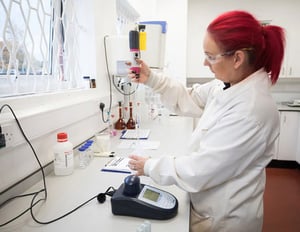Pulse Biosciences, Inc. (NASDAQ: PLSE), a notable player in the healthcare sector, has carved a niche for itself as a pioneer in the field of bioelectric medicine. With a market capitalization of $1.14 billion, this Miami-based company is gaining attention for its innovative solutions in medical instruments and supplies, particularly in the realm of skin and soft tissue ablation.
Pulse Biosciences is best known for its flagship product, the CellFX System, which employs Nanosecond Pulsed-Field Ablation (nsPFA) technology to treat benign skin lesions. This technology promises a new frontier in medical treatments, offering potential applications in various surgical settings, including soft tissue ablation and cardiac procedures.
Despite its technological advancements, Pulse Biosciences is still navigating the path to profitability. The company’s current stock price stands at $16.88, slightly below its 50-day moving average of $16.74 and well under its 200-day moving average of $17.91. This may indicate some short-term downward pressure on the stock, compounded by a Relative Strength Index (RSI) of 33.46, suggesting that the stock is approaching oversold territory.
Financially, Pulse Biosciences is facing challenges typical of high-growth, innovation-driven companies. It currently reports an EPS of -0.99, reflecting ongoing investments in research and development and commercialization efforts. The company’s return on equity is notably negative at -77.86%, highlighting the significant reinvestment into its groundbreaking technologies. Furthermore, with a free cash flow of -$19.59 million, the company is clearly in a phase of operational expenditure aimed at sustaining its growth trajectory.
The absence of traditional valuation metrics like P/E, PEG, and Price/Sales ratios indicates that Pulse Biosciences is still in the growth stage, focusing more on innovation and market penetration than on immediate profitability. This is not uncommon in the medical technology industry, where the development cycles for new technologies can be both costly and lengthy.
From an investment standpoint, Pulse Biosciences does not currently offer dividends, with a payout ratio of 0.00%. This aligns with its strategy of reinvesting earnings into further product development and market expansion, a common approach among companies aiming to capture significant market share in emerging technology sectors.
Analyst ratings and target prices for Pulse Biosciences are currently unavailable, which may reflect the speculative nature of investing in a company that is heavily focused on future growth rather than immediate financial returns. For risk-tolerant investors, this presents an opportunity to invest in a company that could potentially redefine treatments in dermatology and beyond.
For those considering investing in Pulse Biosciences, the company’s innovative edge and significant market cap make it a compelling case. However, potential investors should be prepared for volatility and the possibility of a longer-term horizon before significant returns are realized. As Pulse Biosciences continues to expand its technological capabilities and market applications, it remains a fascinating entity to watch in the healthcare sector.




































